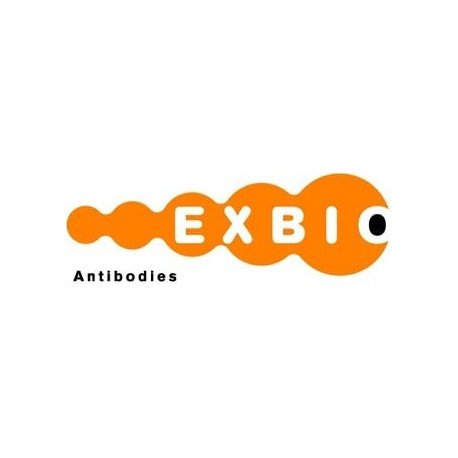Cart 0 Product Products (empty)
No products
To be determined Shipping
0,00 € Total
Prices are tax excluded
Product successfully added to your shopping cart
Quantity
Total
There are 0 items in your cart. There is 1 item in your cart.
Total products (tax excl.)
Total shipping (tax excl.) To be determined
Total (tax excl.)
Data sheet of Mouse Monoclonal to CD4 / T4
| Brand | Exbio |
| Product type | Primary antibodies |
| Reactivity | Human |
| Clonality | Monoclonal |
More info about Mouse Monoclonal to CD4 / T4
| Brand: | Exbio |
| Product no.: | 11-463-C025 |
| Product type: | Primary antibodies |
| Host species: | Mouse |
| Product name: | Mouse Monoclonal to CD4 / T4 |
| Antigen: | CD4 |
| Clonality: | Monoclonal |
| Negative species: | Porcine |
| Clone: | MEM-16 |
| Isotype: | IgM |
| Immunogen: | HPB cell line (human peripheral blood leukemia T-cells) |
| Format: | purified |
| Specificity: | The antibody MEM-16 recognizes an epitope EF loop of D1 domain of CD4 antigen, a 55 kDa transmebrane glycoprotein expressed on a subset of T lymphocytes (“helper“ T-cells) and also on monocytes, tissue macrophages and granulocytes. _x000D_ HLDA V; WS Code T T-CD04.10 |
| Categories: | CD and Related Antigens (Human) |
| Concentration: | 1 mg/ml |
| Storage buffer: | Tris buffered saline (TBS) with 15 mM sodium azide, approx. pH 8.0 |
| Storage / stability: | Store at 2-8°C. Do not freeze. Do not use after expiration date stamped on vial label. |
| Background: | CD4 is a single chain transmembrane glycoprotein and belongs to immunoglobulin supergene family. In extracellular region there are 4 immunoglobulin-like domains (1 Ig-like V-type and 3 Ig-like C2-type). Transmembrane region forms 25 aa, cytoplasmic tail consists of 38 aa. Domains 1,2 and 4 are stabilized by disulfide bonds. The intracellular domain of CD4 is associated with p56Lck, a Src-like protein tyrosine kinase. It was described that CD4 segregates into specific detergent-resistant T-cell membrane microdomains._x000D_ Extracellular ligands: MHC class II molecules (binds to CDR2-like region in CD4 domain 1); HIV envelope protein gp120 (binds to CDR2-like region in CD4 domain 1); IL-16 (binds to CD4 domain 3), Human seminal plasma glycoprotein gp17 (binds to CD4 domain 1), L-selectin_x000D_ Intracellular ligands: p56LckCD4 is a co-receptor involved in immune response (co-receptor activity in binding to MHC class II molecules) and HIV infection (human immunodeficiency virus; CD4 is primary receptor for HIV-1 surface glycoprotein gp120). CD4 regulates T-cell activation, T/B-cell adhesion, T-cell diferentiation, T-cell selection and signal transduction._x000D_ Defects in antigen presentation (MHC class II) cause dysfunction of CD4+ T-cells and their almost complete absence in patients blood, tissue and organs (SCID immunodeficiency). |
| Purity: | > 95% (by SDS-PAGE) |
| Purification: | Purified by precipitation and chromatography |
| Product specific references: | *Brdicková N, Brdicka T, Angelisová P, Horváth O, Spicka J, Hilgert I, Paces J, Simeoni L, Kliche S, Merten C, Schraven B, Horejsà V: LIME: a new membrane Raft-associated adaptor protein involved in CD4 and CD8 coreceptor signaling. J Exp Med. 2003 Nov 17;198(10):1453-62., *Leukocyte Typing V., Schlossman S. et al. (Eds.), Oxford University Press (1995). , *Leukocyte Typing VI., Kishimoto T. et al. (Eds.), Garland Publishing, Inc., New York (1998); p. 49-54. |
| General references: | *Millan J, Cerny J, Horejsi V, Alonso MA: CD4 segregates into specific detergent-resistant T-cell membrane microdomains. Tissue Antigens. 1999 Jan;53(1):33-40., *Foti M, Phelouzat MA, Holm A, Rasmusson BJ, Carpentier JL: p56Lck anchors CD4 to distinct microdomains on microvilli. Proc Natl Acad Sci U S A. 2002 Feb 19;99(4):2008-13., Clapham PR, McKnight A.: Cell surface receptors, virus entry and tropism of primate lentiviruses. J Gen Virol. 2002 Aug;83(Pt 8):1809-29. |
| Related products: | - Mouse Monoclonal to CD41/CD61 (bovine) - Mouse Monoclonal to CD40 - Mouse Monoclonal to CD41 / Platelet GPIIb |
| Shipping condition: | Room temperature |


